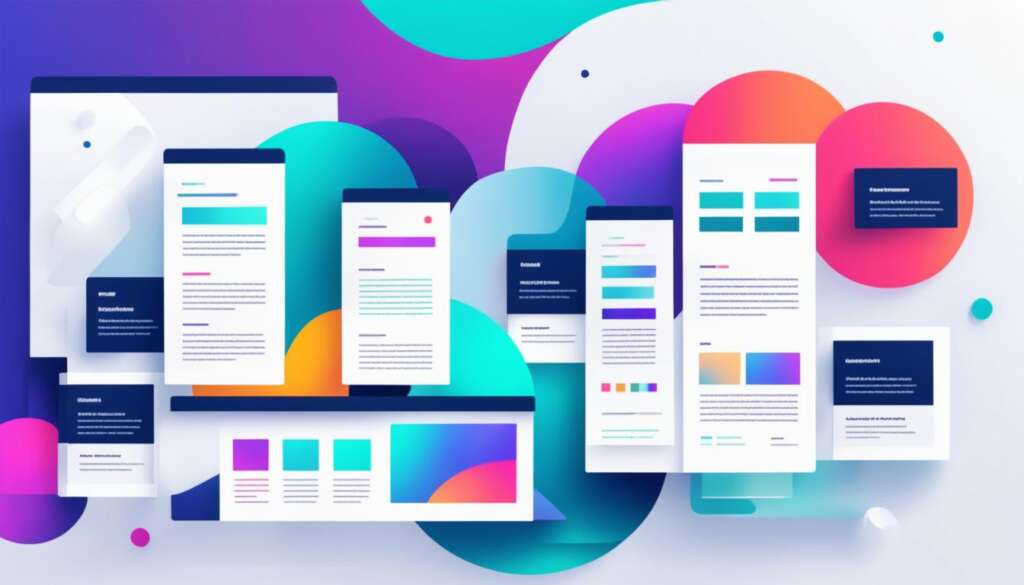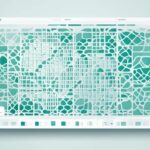Table of Contents
Media queries are an essential tool in web development when it comes to creating responsive designs that deliver an optimal user experience across various devices. By utilizing media queries, developers can apply specific styles based on the characteristics of the user’s device, such as screen size, resolution, and orientation, ensuring that the website adapts seamlessly to different devices.
Responsive design has become increasingly crucial in today’s digital landscape, where users access content from a range of devices, including smartphones, tablets, and desktop computers. Implementing media queries allows websites to dynamically adjust their layout and appearance, ensuring that users can easily navigate and consume content across different screen sizes and resolutions.
Considering the diversity of devices and user preferences, media queries enable developers to create adaptable and flexible layouts that cater to specific device capabilities. Whether it’s a small handheld device or a high-resolution display, media queries help optimize the user experience by presenting content in the most effective manner possible.
By employing media queries, websites can become more user-friendly, resulting in increased engagement, longer browsing sessions, and higher conversion rates. The ability to create responsive designs that adapt to the user’s device is crucial in today’s highly competitive digital landscape, where user experience can make or break the success of a website.
As web technologies continue to advance and new devices and display sizes emerge, the role of media queries in crafting responsive layouts will only grow more critical. With their ability to ensure optimal user experiences across devices, media queries are an indispensable tool for any modern web developer.
Let’s delve deeper into the syntax and examples of media queries in the next section, looking at how they can be effectively utilized to create responsive and user-friendly layouts.
Media Query Syntax and Examples
Media queries play a crucial role in creating responsive layouts and optimizing the user experience across various devices. Understanding the syntax of media queries is essential for effectively implementing responsive design. A media query begins with the @media keyword, followed by the media type and specific media features.
Let’s explore some examples of media queries to further illustrate their usage and benefits:
1. Responsive Layouts for Different Screen Sizes
One of the primary applications of media queries is creating responsive layouts that adapt to different screen sizes. By adjusting the styles based on the available space, content can be presented in a user-friendly manner regardless of the device being used. Here’s an example of a media query that targets small screens:
@media screen and (max-width: 767px) {
/* Styles for small screens */
}
2. Changing Styles Based on Device Orientation
Media queries can also be used to change styles based on the orientation of the device. This ensures that the content displays optimally whether the user is viewing it vertically or horizontally. Here’s an example of a media query that targets landscape orientation:
@media screen and (orientation: landscape) {
/* Styles for landscape orientation */
}
3. Targeting High-Resolution Displays
Media queries allow developers to target high-resolution displays and deliver optimized content for such devices. By specifying a minimum resolution, images and graphics can be rendered with higher quality on high-density screens. Here’s an example of a media query that targets displays with at least 2x pixel density:
@media screen and (min-resolution: 192dpi), (min-resolution: 2dppx) {
/* Styles for high-resolution displays */
}
These practical examples demonstrate how media queries can be used to enhance responsiveness and deliver an optimal user experience. By applying specific styles based on device characteristics such as screen size, orientation, and resolution, developers can ensure that their websites adapt seamlessly to different devices.
Advanced Techniques for Responsive Design
In addition to basic media query usage, advanced techniques can enhance responsiveness in responsive design. These techniques include:
- Mobile-First Approach: Adopting a mobile-first approach involves designing for mobile devices first and then progressively enhancing the design for larger screens. This approach ensures that the design is optimized for smaller screens and provides a solid foundation for scalability.
- Breakpoint Strategies: Selecting breakpoints strategically is crucial for optimizing the user experience across multiple devices. Breakpoints are specific screen sizes at which the layout adjusts to accommodate different devices. By carefully choosing breakpoints, designers can ensure that the content is displayed optimally on various screen sizes.
- Customizing for Specific Devices: Media queries can be used to target specific device characteristics such as resolution, color gamut, and pointer capabilities. By tailoring the design to the capabilities of the device, designers can create highly customized and tailored experiences for different devices.
Implementing these advanced techniques enhances the responsiveness of a website or application and provides a seamless user experience across devices. By starting with a mobile-first approach, designers can prioritize the most essential content and functionalities for smaller screens, ensuring a smooth transition to larger screens. Strategically selecting breakpoints and customizing the design for specific devices further enhances the user experience, making the website or application feel tailored for each device.
Best Practices for Using Media Queries
When implementing media queries in web development, it is crucial to follow best practices to ensure responsive and performant websites. By considering the following recommendations, you can optimize the implementation of media queries and enhance the user experience:
- Test on Real Devices: To ensure the effectiveness of responsive designs, it is essential to test them on real devices. Emulators and simulators may not accurately reflect the behavior and performance of actual devices, so testing on physical devices is crucial. This approach helps identify any layout or functionality issues specific to certain devices, enabling you to fine-tune your responsive designs for optimal user experience.
- Plan for Scalability: As the number of device types and screen resolutions continues to grow, it is important to plan for scalability when implementing media queries. Consider how your designs will adapt to future devices with different characteristics. By adopting a flexible and future-proof approach, you can easily extend and modify your media queries as new devices emerge.
- Use Logical Operator Combinations: Media queries allow for the use of logical operators such as “and”, “or”, and “not”. By combining these operators, you can create more complex conditions for applying styles. This flexibility gives you greater control over how your designs respond to different device attributes, allowing for more precise customization.
- Consider Accessibility Requirements: Accessibility is a crucial aspect of web development. When using media queries, consider how they may affect users with disabilities or specific accessibility requirements. Ensuring that your responsive designs are accessible to all users contributes to a positive user experience and demonstrates your commitment to inclusivity.
- Optimize Performance: Media queries can impact the performance of a website if used inefficiently. To optimize performance, minimize the number of media queries, combine similar queries to reduce redundancy, and optimize query conditions. By streamlining your media queries, you can improve the loading speed and overall performance of your website.
By adhering to these best practices, you can harness the full potential of media queries, creating responsive and user-friendly websites that adapt seamlessly to various devices.
Conclusion
Media queries are indispensable tools in creating responsive layouts and ensuring an optimal user experience across different devices. By utilizing media queries, developers can design adaptable and responsive websites that seamlessly adjust to varying screen sizes, resolutions, and orientations. The implementation of best practices like testing on real devices and optimizing performance further enhances the effectiveness of media queries.
Overall, media queries empower modern web developers and designers to craft fluid and dynamic layouts that enhance user experience. These tools enable websites to adapt to the unique characteristics of different devices, providing users with a consistent and engaging experience regardless of the screen they use to access the website. With media queries, responsive layouts become the foundation for delivering an optimal user experience in today’s mobile-centric digital landscape.
Incorporating media queries into the web development process allows for greater accessibility and usability, as websites can seamlessly adapt to a wide range of devices and platforms. Responsive layouts created through media queries ensure that users can effortlessly navigate and interact with content, regardless of whether they are using a smartphone, tablet, or desktop computer. By embracing media queries, websites can align with the expectations of users in an increasingly mobile-driven world, delivering an enhanced and engaging user experience.
FAQ
What are media queries and how do they contribute to responsive design?
Media queries are a powerful tool in web development that allow us to achieve responsive design, ensuring optimal user experience across various devices. They enable developers to apply specific styles based on the characteristics of the user’s device, such as screen size, resolution, and orientation. By utilizing media queries, we can create adaptable and responsive layouts that adjust according to the device’s capabilities, providing an optimized user experience.
What is the syntax for media queries and can you provide examples?
Media queries follow a specific syntax, starting with the @media keyword followed by the media type and specific media features. Examples of media queries include creating responsive layouts that adapt to different screen sizes, changing styles based on device orientation, and targeting high-resolution displays. Practical examples demonstrate how media queries can be used effectively to enhance responsiveness and provide an optimal user experience.
Are there any advanced techniques for responsive design using media queries?
Yes, there are advanced techniques that can enhance responsiveness in responsive design. These include adopting a mobile-first approach, where designs are created for mobile devices first and progressively enhanced for larger screens, selecting breakpoints strategically to optimize the user experience, and utilizing media queries to target specific device characteristics such as resolution, color gamut, and pointer capabilities. These techniques enable the creation of highly customized and tailored experiences for different devices.
What are the best practices for using media queries effectively?
To ensure the effective implementation of media queries, it is important to test responsive designs on real devices, plan for scalability and future-proofing, use logical operator combinations to create more complex conditions, consider accessibility requirements in media queries, and optimize performance by minimizing the number of queries, combining similar queries, and optimizing query conditions. These best practices help ensure that media queries are implemented correctly and result in responsive and performant websites.
How do media queries contribute to crafting responsive layouts and enhancing user experience?
Media queries play a vital role in crafting responsive layouts and providing an optimal user experience across devices. By utilizing media queries, developers can create adaptable and responsive designs that adjust to different screen sizes, resolutions, and orientations. Best practices, such as testing on real devices and optimizing performance, help ensure the effective implementation of media queries. Overall, media queries are essential tools for modern web development, enabling designers and developers to create fluid and responsive layouts that enhance the user experience.













